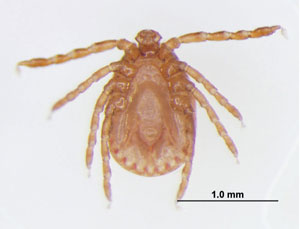Options available to protect against longhorned tick

The invasive longhorned (bush) tick, Haemaphysalis longicornis, has been a growing concern for the veterinary community following the appearance of the species last September in New Jersey.
The parasite, which is native to Japan, China, and the Korean Peninsula, has since been identified in several mid-Atlantic states as well as Arkansas. Such rapid dispersal is because of this particular species' rare ability to reproduce asexually, with progeny appearing within six months of reproduction versus the two years typical of more common tick species. As the prevalence of Haemaphysalis longicornis increases, food animal and companion animal practitioners alike have considered what options might be available for protection of their patients.
The federal regulatory system requires that all product-label indication claims for parasiticides be based on substantial evidence of safety and efficacy against endoparasites and ectoparasites. Without an endemic parasite population against which such products can be tested, pharmaceutical companies can't establish efficacy of an ectoparasiticide against that species. As such, there are currently no parasiticides available in the United States that contain a label claim against Haemaphysalis longicornis.
However, several ectoparasiticides within the classes of the isoxazolines and macrocyclic lactones that are approved in the U.S. for similar ectoparasites are also approved in other countries where Haemaphysalis longicornis is endemic, with an indication for Haemaphysalis longicornis.
Practitioners should remember that the use of Food and Drug Administration–approved drug products that are not labeled for this tick species would constitute extralabel use. Such extralabel use, even of approved drugs, must be under veterinary oversight and be in accordance with the Animal Medicinal Drug Use Clarification Act of 1994 and regulations on extralabel use, which pertain only to drugs and do not apply to anti-parasitic products that are pesticides.
Dr. Dharati Szymanski, an assistant director of the AVMA Division of Animal and Public Health, said the AVMA recognizes the importance of sound science-based principles in the development and implementation of ectoparasite prevention programs and encourages practitioners to learn more about how they can contribute to public health efforts related to local tick control and surveillance in their area.